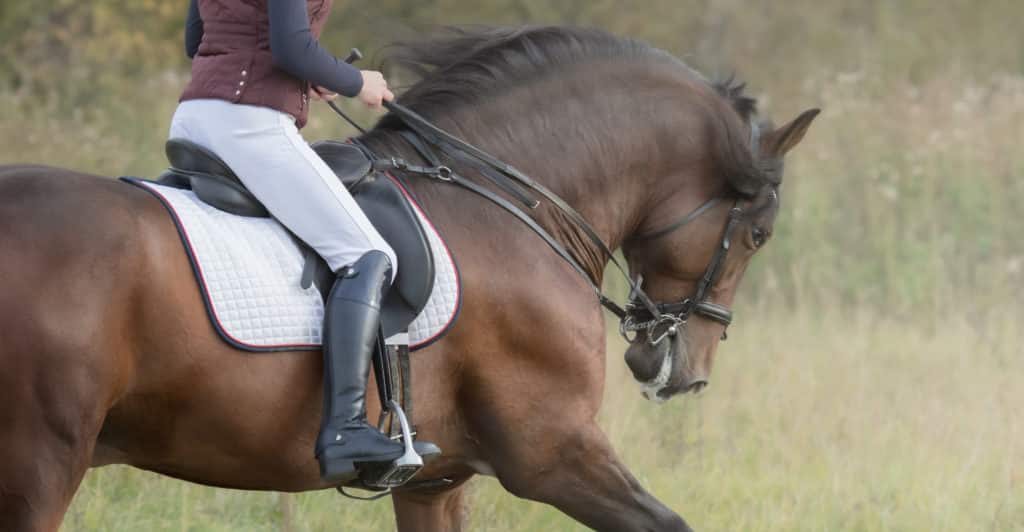Equine Lifestyle
A guide to buying long riding boots for riding
Choosing the right footwear for riding is a big deal, right? You want to be comfortable, look great, and still feel safe and secure in them.
Long riding boots (also known as tall riding boots) are considered to offer great protection whilst being stylish at the same time.
So why the long boot? Read on to find out more about the footwear loved by equestrians far and wide.
What type of riding boot is best?
There is no ‘one size fits all’ answer to this question.
Riding boots come in a variety of styles, shapes, and materials, all tailored to fit the rider’s specific needs. They can be gender specific, or waterproof and thermal. They can be easy to clean, or high maintenance. Before deciding, consider what you will be using them for.
For showjumpers and event jumpers, a flexible boot is important. For dressage riders, an elegant and stiffer boot might be preferred.
You’ll also want different boots for mucking out. Leather riding boots can be damaged by mud and manure, and they may not have sufficient grip in wet and muddy conditions.
Are long boots better for horse riding?
Long boots are often viewed to provide better protection when riding. They help prevent chafing from the stirrup leathers and encourage a better leg position by keeping the feet and ankles firmly in place.
This traditional boot style is most popular in competitions, probably because of their more polished look. But even among the wider equestrian community, they remain a firm favourite. They are the ‘quintessential’ of horse riding if you will.
Your long riding boots should look elegant and elongated – Spanish cut boots have a curve that make your legs look longer!
What are tall riding boots called?
Field boots have a lace up closure at the front of boot meaning you can tighten them to get the best fit. This is great way to keep your ankles are secure without compromising on flexibility.
Keeping your heel tight to the sole of the boot can also provide better shock absorbance – this makes them great for Showjumping, eventing, and hunting!
Dress boots are most often used for high-level competitions. They have no lacing and have a Spanish cut making them look long and sleek. Sometime these boots have zippers.
Hunting boots have the same characteristics as dress boots, but they have a cuff at the top as their unique feature.
How should a long riding boot fit?
It is most important that your riding boots are snug around the ankle and calf (dressage boots are an exception as they run straight from calf to ankle).
A boot that measures too wide around the calf can hinder your riding position as it shifts arounds. A boot that is too tight can restrict blood circulation.
You don’t want a gap between your ankle and the widest part of your calf so make sure your long boots follow the curve of your leg.
Getting a boot that is too low can catch on the bottom of saddle. This can impact your riding and sometimes be dangerous. It is also a fashion faux pax!
Finally, boots that are too tall will not drop enough below the knee. This can make it uncomfortable, inflexible and cause excessive wrinkling in the leather. Heel lifts can help with comfort in a boot that hasn’t dropped enough.
How do you measure long boot size?
There are three measurements required for long riding boots: foot size, calf width and knee height.
Foot size
You’ll already be familiar with your foot size, but you may need to size up:
*Wear the breeches and socks you will most often wear to get the most accurate measurement
*Your foot should feel comfortable inside the boot. Your toes should not touch the front and your heels should rest comfortably in backward outlift.
*Tall boots often have a narrow width – use leather conditioner to stretch the boot where is feels too tight.
Calf Width
1) Sit down with your knees bent a 90degree angle
2) Wrap the measuring tape around the thickest part of your calf. The tape should be snug and not tight.
3) Record measurements in cm and inches
4) Take several more measurements either side. This is to check you have the widest measurement
Tips
Have a friend help you take the measurements if you struggle. Or get your long riding boots measured in store.
To save time measure in inches and centimetres as measurement units vary among suppliers.
If you prefer a looser boot around then calf leave a slight gap.
Knee Height
1) With a bare foot, slightly bend your knee as if in a jumping position
2) Measure from bottom of heel to knee crease
3) Record size in cm and inches
Tips
Brand new boots should reach the knee and have a slight wrinkle behind the knee cap. As the boot is broken in, the ankles will crease causing it to drop.
• Field boots drop around 1.5 – 2 inches.
• Dress boots drop around ¾ to 1 inch.
Account for this by measuring up a size. For example, if you measure18 inches opt for a boot between 19 and 20 inches.
Top Ride Away
Long boots are stylish, safe and a well-loved part of the equestrian community. But if you remain undecided on whether it is the right riding boot for you, you can read this article on short riding boots to help you decide.
